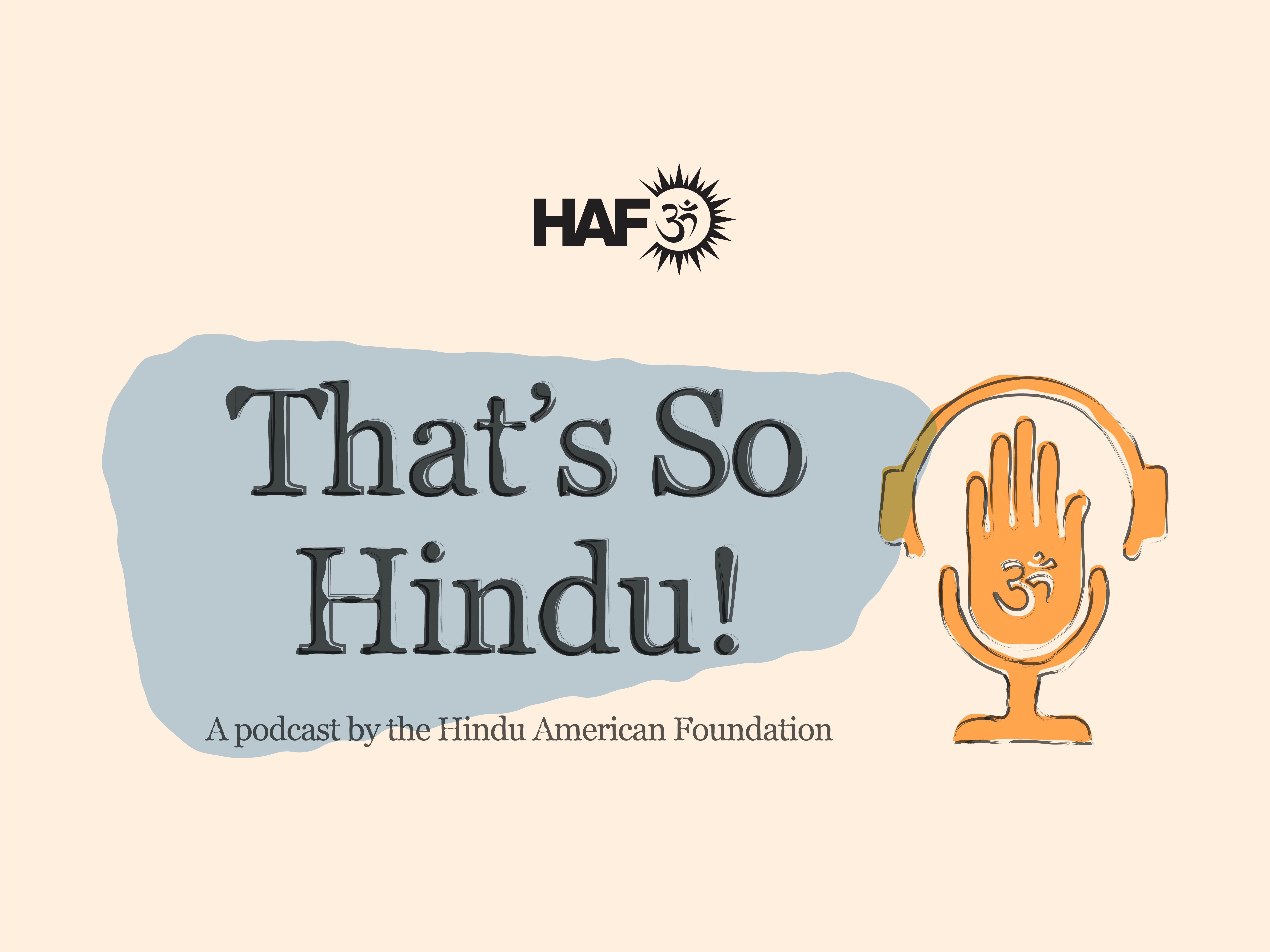
Growing up as a Hindu in America, I’ve always known that most non-Hindus don’t have a good grasp of my faith’s beliefs; also, that their concept of what constitutes religious scripture is rooted in their experience with the Abrahamic traditions, turning to one main book to explain the beliefs and doctrines of the faithful.
From this perspective it’s easy to see how attempting to grapple with the enormous body of works that make up Hindu sacred knowledge, and that there isn’t one single tome that can be called a ‘Hindu Bible,’ can be daunting. But what I’ve never understood, though, is how even some of the best trained academics in the West and some of the leading textbook publishers, so often present our most sacred texts in ways that are so dramatically out of touch with how Hindus, Hindu spiritual leaders, and Hindu scholars, themselves interpret them.
You’d think that in the second decade of the twenty-first century, racist, colonial-era misconceptions about Hindu beliefs, practices, and history would have been eliminated from our educational materials. Sadly that’s not the case.
To understand just how poor many textbook presentations of Hindu scriptures can be, let me first outline how they are categorized and what they contain.
Hindu scripture encompasses all of the human experience
Hindu scripture is made up of two groups: Shruti and Smriti. Critically important is that while Shruti texts are considered timeless truths, Smriti texts are timely—that is, they are intended to be used and (re)interpreted based on context.
Shruti are those texts which are considered ‘revealed’ or, more aptly, realized works and are taken to be divinely inspired. In this group are the Vedas. These are the main body of Hindu literature and the foundation for most other Hindu texts. The Vedas are split into four books: the Rig, Yajur, Sama, and Atharva. Each book covers various themes, but all include a Samhita portion, a Brahmana portion, an Aranyaka portion, and Upanishad or Vedanta portion. These explain, interpret, and encapsulate the essence of the text. All are ancient and all were transmitted orally via chanting for generations before being first written down. They are often memorized and chanted in a variety of ritual and devotional contexts to this day.
Smriti are those works which are ‘remembered’ and include the many other auxiliary texts which are based from the Vedas. The Puranas, Upavedas (study of Ayurveda is included here), Vedangas, Agamas, Darshana Shastras, Dharma Shastras, and Bhakti (devotional) texts are all classified as Smriti. These texts cover a vast range of topics: stories about Gods and Goddesses (often making philosophical teachings more easily comprehensible and entertaining), genealogies of kings and sages, history of holy sites, creation stories, folktales, science, cosmology, astronomy, theology, and philosophy, and more.
This vast body of scripture contains metaphysical and scientific insights side by side in the same category of works. The minutia of statecraft is expounded upon, as is the profound expression of devotion to the Divine. The distinction between religious and secular writing is at best blurry, if acknowledged at all. Some texts are very technical, concerning temple rituals and temple construction, for example, and aren’t widely read except by those people who are specialists. Others, such the Bhagavad Gita, have passages that are known by heart by millions of people, from all strata of society. All of these can rightly be called scripture. Individual Hindus and individual Hindu lineages emphasize certain texts and de-emphasize others, complicating the picture.
Just how bad are current textbooks?
How much of that is needed to fully educate middle school students about Hindu religious beliefs, given space constraints in textbooks and the school calendar, is open for debate. But for the poor state of affairs in some textbooks, take a look at these four excerpts of how Hindu scripture is described in some current draft of textbooks for California. Each is a quote from a textbook intended for sixth and seventh graders and is representative of other errors made. The bold emphasis in these is mine.
“In time Brahmanism’s rituals and hymns were recorded in sacred texts called the Vedas.”
Brahmanism is a very specific term used by some scholars to refer to a period of religious development in ancient India. In that way this passage is understandable. But in contemporary discourse it is a loaded term, most often used to denigrate Hinduism for the pernicious social issues ranging from patriarchy and violence to caste discrimination and oppression. It’s not normally used by Hindus, outside of a narrow academic context. Even many academics now question the validity of the term and/or concept. Also, describing the content of the Vedas as “rituals and hymns” without mentioning the metaphysical and philosophical insights contained within them doesn’t accurately describe the texts and belittles the importance of them. Is this the best way to present the beliefs of ancient Hindus and the origin of contemporary Hinduism to middle schoolers?
“[The Vedas] include hymns, spells, charms, and descriptions of rituals.” [emphasis added]
Here again there is no mention of spiritual insight contained in the Vedas. It makes it seem like the Vedas are some combination of a song book and book of magic, not the foundation of a religion that has made some of the deepest insights into the nature of reality the world has ever known.
“A second collection of Vedic texts describes secret rituals that only certain people could perform. In fact, the rituals were so secret that they had to be done in the forest, far from other people.” [emphasis added]
More of the same here, with the added implication that people with knowledge of the Vedas were probably doing something no-good off in the woods.
“They had to memorize the poems and hymns, such as the Vedas, that were important in their culture. Eventually, people figured out how to write it down so they could keep records and write down scriptures, which are the basis for Hinduism.”
This passage makes one assumption and one historical error. The assumption that it makes is that oral transmission of a tradition is inferior to written transmission. The error it makes is that it implies that this oral transmission is a thing of the past. In fact oral transmission of the Vedas still goes on to this day, even though written texts are readily available both in the original language and in translation. Young students still memorize and chant the Vedas regularly. This is not an inferior method of transmission of knowledge nor the fidelity of the text.
It’s both what’s in textbooks and what’s left out that’s the problem
It’s not just what is included in the textbooks and how it’s described. It’s also what’s left out: basic information about how Hindu scripture is classified, and often any mention of any texts beside the Vedas; that the study of architecture, astronomy, ethics, history, and medicine are inherent parts of Hindu scripture, dating back millennia; how Hindus today interpret and use their texts.
All of this perpetuates racist, colonial-era stereotypes about Hinduism being nothing more than superstitious and complex rituals. It fails to present to students a complete and relevant picture of the place of scripture within Hinduism, as well as Hindu beliefs.
Hinduism is the world’s third-largest religion, with slightly more than 1 billion people identifying as Hindu. In the United States there are over three million practicing Hindus—of Indian origin, from the Caribbean and other nations of the diaspora, and people with no historical connection to India or South Asia but who have adopted the religion. Hindu children have been studying in American schools for more than five decades. There are second and third generation children who, while identifying as Hindu, have little to no connection to India but a strong one to the United States. Hindus are solidly part of contemporary American society. Our school textbooks have an obligation to present Hindu beliefs accurately.
Our technology today gives each of us access, literally in the palm of the hand, to the sum of all of human intellectual output still extant. The information is available. And given contemporary sensitivity about not perpetuating stereotypes about non-Western peoples originating in the colonial era, you’d think that school textbooks would portray Hindu scriptures and beliefs as accurately and equitably as the other major religions of the world. But too often they do not.
Hindus themselves, academics, and textbook publishers all have a role to play in correcting this
Exoticizing and/or judging cultures is rightly called out and condemned by academics and activists alike across the globe, but when it comes to the study of Hinduism a peculiar exception seems to be made. The views of outsiders are still too often considered superior or more accurate than those from within the tradition. For this to change, the voice of practicing Hindus must become louder and stronger within the academia. Hindu voices and perspectives must be allowed to contribute to the global narrative about Hinduism. Indeed, they must be prioritized.
Moreover, Western academics could also learn from immersing themselves in systematic study in traditional schools where Dharmic religions have historically flourished and have rigorously been studied, lived, and passed on. Gurukulas, for example, would be an ideal place for long-term schooling, understanding, and research in Hinduism. Doing so would likely help remedy many of the misconceptions about Hindu beliefs that are unfortunately mirrored in our textbooks.
Finally, textbook publishers in the United States must themselves work more closely and directly with the Hindu American community while drafting their content. Publishers must be open to getting feedback from their audiences who actively, dynamically practice Hinduism, at the very least to include this perspective in their materials in addition to those of scholars. Doing so would assist in offering non-Hindus a more accurate, nuanced understanding of Hinduism as a religion and of Hindus themselves.








































